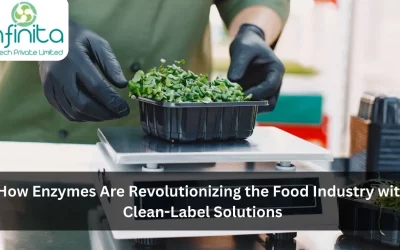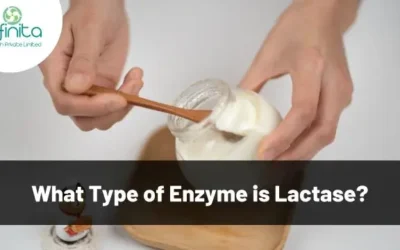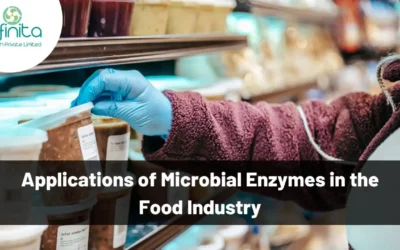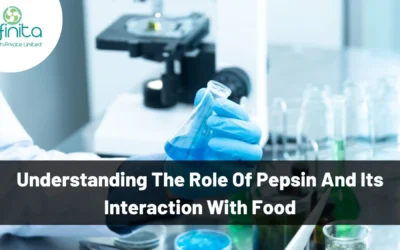Introduction of Invertase Enzyme
Invertase, also called beta-fructofuranosidase cleaving the terminal non-reducing beta-fructofuranoside residues, is a glycoprotein with an optimum pH 4.5 and stability at 50 °C. It is widely distributed in the biosphere especially in plants and microorganisms. Saccharomyces cerevisiae commonly called baker’s yeast is the chief strain used for the production and purification of the enzyme.
Invertase in nature exists in different isoforms. In yeasts, it is present either as extracellular Invertase or intracellular Invertase. In plants, there are three isoforms each differing in biochemical properties and subcellular locations. Invertase in plants is essential not only for metabolism but also help in osmoregulation, development and defense system. In humans, the enzyme acts as an immune booster, as an antioxidant, an antiseptic and helpful for bone cancer or stomach cancer patients in some cases.
The present study focuses upon the Invertase along with its application and purification from Saccharomyces cerevisiae. Invertase from baker’s yeast was purified by concentrating the crude extract with ammonium sulfate (70%), dialyzed using sample buffer (0.1 M Tris, pH 7.2) and followed by centrifugation. The resultant supernatant was then applied on DEAE-cellulose column equilibrated with Tris buffer. The enzyme was eluted with a step gradient of NaCl (0–0.5 M) in starting buffer. Fractions showing the highest activity were pooled. The result contains the purification summary with the purification fold of 27.13 and recovery of 31.93%. For a better understanding, the mechanism and structure of the purified enzyme characterization are essential.
Sources Of Invertase Enzyme
The official name for Invertase is beta-fructofuranosidase (EC.3.2.1.26), which implies that the reaction catalysed by the enzyme, is the hydrolysis of the terminal non-reducing beta-fructofuranoside residues in beta-fructofuranosides.
Invertase is widely distributed among the biosphere. It is mainly characterized by plants and microorganisms. Saccharomyces cerevisiae commonly called Baker’s yeast is the chief strain used for the production of Invertase commercially. They are found in wild growing, on the skin of grapes and other fruits. Though plants like Japanese Pear fruit (Pyrus pyrifolia), Pea (Pisum sativum), Oat (Avena sativa) can also be used, generally microorganisms like S. _cerevisiae, Candida utilis, A. niger are considered ideal for their study.
Kinetics of Invertase enzyme
In contrary to most other enzymes, Invertase exhibits relatively high activity over a broad range of pH (3.5–4.5) with the optimum near pH of 4.5. The enzyme activity reaches a maximum at 55 °C. The Michaelis–Menten (Km) value for the free enzyme is typically 30 mm (approx.).
The enzyme is a glycoprotein, stable at 50 °C. The cations Hg²+, Ag+, Ca²+and Cu²+ exhibit a marked inhibition of the enzyme. Competitive inhibition was observed with the fructose analogue 2, 5-anhydro-D-mannitol suggesting that the enzyme was inhibited by the furanose form of fructose.
History of Invertase Enzyme
Invertase actually goes back several years. Chemists in the 1800s were studying the effect of yeast on sugar and realised that before the sugar began fermenting it changed form. After much research, the chemists isolated the enzyme that caused this: invertase.
By the year 1900, the process for deriving invertase from yeast was commonly used. Over the course of the next 20 plus years, chemists found many uses for invertase, most importantly in candy-making.
How Invertase Enzyme Works
When invertase is added to sugar candy recipes, like fondant candy fillings, it gradually liquefies the fondant. This is one way of producing the liquid centre in candies like cherry cordials. The reaction takes a few days to occur, so there is a waiting period when making liquid centers with invertase. This enzyme also makes fondant appear smoother.
Although it sounds like something made in a lab, invertase is a part of many different natural processes. It is what helps bees transform nectar into honey. And we actually have our own supply of invertase as part of our saliva.
How Much Is Needed
The exact amount of invertase needed depends on many factors. These include the strength and preparation of the invertase, the temperature of the environment, and the recipe itself. As a very general rule, you should add between 1/4 teaspoon and 1 teaspoon of invertase per pound of fondant.
Storage
The invertase itself should be stored in the refrigerator for longevity. Cold temperatures slow the invertase reaction. Candies with invertase should be stored at room temperature instead of in the refrigerator for the best and fastest results.
Where to Buy Invertase Enzyme
Since invertase is commonly used in baking and candy making, the best place to look for it is in well-stocked cake decorating and candy supply stores. It is also found on many candy supply websites.
Applications of Invertase enzyme
An equimolar mixture of fructose and glucose (invert syrup) obtained by sucrose hydrolysis is sweeter than sucrose due to a high degree of sweetness of fructose, as a result, the sugar content can be increased without crystallisation of the material. The production of non-crystallisable sugar syrup from sucrose is one of the major applications of Invertase enzyme. Invert syrup has hygroscopic properties which makes it useful in the manufacturing of soft-centered candies and fondants as ahumectants. Alcoholic beverages, lactic acid, glycerol, etc. produced by fermentation of sucrose containing substrates requires the use of Invertase. It is also associated with insulinase for the hydrolysis of inulin (poly-fructose) to fructose.
Another application of the enzyme is seen in drug and pharmaceutical industries. Also, it is used in the manufacture of artificial honey and plasticising agents which are used in cosmetics. Enzyme electrodes are used for the detection of sucrose. Formation of undesirable flavouring agents, as well as coloured impurities, do not take place on enzymatic hydrolysis of sucrose instead of acid hydrolysis.
Immobilised Invertase is used for continuous hydrolysis of sucrose as the resulting shifts in the pH can be used to prevent the formation of oligosaccharides by the transferase activity associated with the soluble enzyme. Invertase is a powerful anti-microbial agent and anti-oxidant aid in the prevention of bacterial infestations and gut fermentation due to oxidation.
Raw honey was used in ancient India in killing bacteria, reducing intestinal ailments and was given to patients having a weak heart. It can also be used in subsiding bacterial infections because of its ability to extract moisture from the body of the patient. According to a European study on 18000 patients, honey has been proved effective in treating respiratory tract infection such as bronchitis, asthma, and allergies. Invertase along with other enzymes has also been shown to help cure colds, flu, and other respiratory problems.
What Is Inverted Sugar?
Inverted or invert sugar is a mixture of glucose and fructose; it is obtained by splitting sucrose into these two components. The mixture is sold as a viscous liquid and is often referred to as trimoline or invert syrup. Compared to sucrose, inverted sugar is sweeter and its products (glucose and fructose) tend to retain moisture and are less prone to crystallization.
The disaccharide sucrose (table sugar) can be split in a hydrolysis reaction The hydrolysis can be induced simply by heating an aqueous solution of sucrose, but catalysts such as lemon juice or cream of tartar can be added to accelerate the conversion. The mixture when boiled to 236°F (114°C) will convert enough of the sucrose to effectively prevent crystallisation, without giving a noticeably sour taste. Invert sugar syrup may also be produced without the use of acids or enzymes by thermal means alone: two parts granulated sucrose and one-part water simmered for five to seven minutes will convert a modest portion to invert sugar.
Note: Inverted sugar is automatically produced when making jams since when by combining the sugar with the acid in the fruit and heating. Most of the sugar in honey is also inverted sugar.
Production of Invertase Enzyme
Common sugar can be inverted quickly by mixing sugar and citric acid or cream of tartar at a ratio of about 1000:1 by weight and adding water. If lemon juice which is about five percent citric acid by weight is used instead then the ratio becomes 50:1. Such a mixture, heated to 114 °C (237 °F) and added to another food, prevents crystallization without tasting sour.
Inverted sugar syrup can be made without acids or enzymes by heating it up alone: two parts granulated sugar and one-part water, simmered for five to seven minutes, will be partly inverted.
Commercially prepared enzyme-catalysed solutions are inverted at 60 °C (140 °F). The optimum pH for inversion is 5.0. Invertase is added at a rate of about 0.15% of the syrup’s weight, and inversion time will be about 8 hours. When completed the syrup temperature is raised to inactivate the invertase, but the syrup is concentrated in a vacuum evaporator to preserve colour.
Commercially prepared hydrochloric-acid catalysed solutions may be inverted at the relatively low temperature of 50 °C (122 °F). The optimum pH for acid-catalysed inversion is 2.15. As the inversion temperature is increased, the inversion time decreases. They are neutralised when the desired level of inversion is reached.
In confectionery and candy making, cream of tartar is commonly used as the acidulant, with typical amounts in the range of 0.15-0.25% of the sugar’s weight. The use of cream of tartar imparts a honey-like flavour to the syrup. After the inversion is completed, it may be neutralised with baking soda using a weight of 45% of the cream of tartar’s weight.
The amount of water can be increased to increase the time it takes to reach the desired final temperature and increasing the time increases the amount of inversion that occurs. In general, higher final temperatures result in thicker syrups, and lower final temperatures, in thinner ones.
All constituent sugars (sucrose, glucose, and fructose) support fermentation, so invert sugar solutions of any composition can be fermented.
What Is Invertase Enzyme?
Enzymatic hydrolysis or inversion is a natural process that eliminates browning and leads to reduced carcinogenic HMF formation. With enzymatic sugar inversion, the amount of dry content can be increased, without increasing the crystallisation. This leads to reduced water activity and therefore increased stability.
It is compatible with high sucrose concentrations. Another advantage of enzymatic inversion is that it requires mild conditions and few chemicals.







